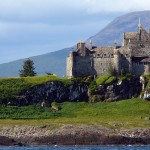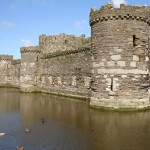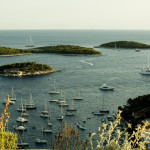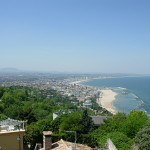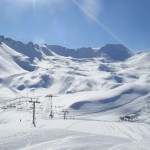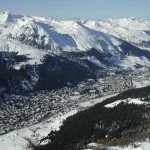A Look Into Baltic Mythology
Ancient myths and legends are an endless source of fascination. From the Greek hero Hercules to Britain’s King Arthur, every culture has its own mythological characters.
Baltic mythology is no exception. Not as widely known as that of other regions, Baltic folklore is nonetheless an intriguing topic.
Since the Baltic region contains a number of different peoples, including Lithuanians, Latvians and Old Prussians, the resulting legends are the enchanting result of a mix of cultures.
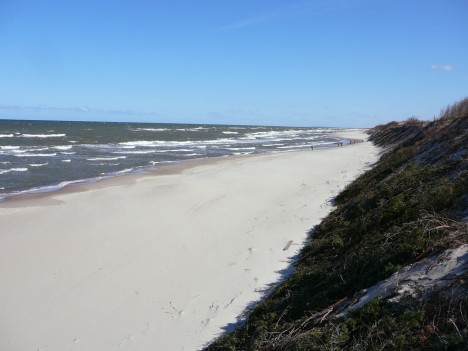
Baltic Sea, Lithuania by Jess & Peter Gardner
Lithuania The Hub of Baltic Mythology
A great deal of Baltic mythology is centred on the beliefs of the Lithuanians. As inhabitants of the region moved from a hunter-gatherer culture to an agrarian one, it is unsurprising that many of their deities are connected with nature worship.
The very last country in Europe to convert to Christianity, Lithuania remained a pagan country until the early fifteenth century. Even now, there are large swathes of the Baltic population who continue to preserve the ancient customs and traditions of their ancestors.
Baltic mythology was based around polytheism, so a group of deities was worshipped rather than a single God. Although some studies suggest that early Baltic mythology was based around the cult of the goddess, it seems to have evolved into a more traditional patriarchal system, with male deities being the most powerful.
The Celestial Family
The undisputed supreme being was Dievas, creator of the world and father of the celestial family. As well as being responsible for the formation of all animal and plant life, it is believed that he accidentally created humans from flecks of dirt as he washed his face! It is possible that our modern word deity is derived from his name. Next in the pecking order was Perkunas, also known as Perun.
The god of thunder, similar to the Norse god Thor, he rides across the skies in a chariot drawn by a goat. Saule was chief among the women, dressed in gold and travelling across the sky in a golden chariot in her role as sun goddess.
Although married to Menes, god of the moon, his naughty shenanigans caused them to separate and for him to be beaten up by Dievas. There were also a whole host of minor nature deities.
Rites and Festivals
A cycle of eight rituals made up the Baltic festival calendar: two equinoxes, two solstices and four additional agricultural festivals. Romuva is a Lithuanian religion that still follows these ancient pre-Christian beliefs and it’s practised not only in the Baltic region but across the world. The centre of the Romuva moment can be found in Sventoji, on the Lithuanian coast.
On the hill of Birute is a circle of eleven wooden pagan deities, forming a sort of calendar of the pagan festivals. Here, as well as at other sacred sites, people carry out the fire ritual, the most important in Baltic mythology. A fire is lit in a special stone alter known as an ‘aukurus’.
Hymns are sung and offerings made to the flames, which are carried to the deities and ancestors by the smoke.
Latvia A Little Bit Different
Much of what we know about Latvian mythology comes from a series of ancient texts known as ‘Daina’. These are very short verses of four lines each, creating a vast collection of folksongs.
Almost two million of these remain, giving a clear picture of the customs and festivals of the Latvian people. As in many agricultural communities, the Latvian deities are largely based in nature.
Although it may initially appear that as a culture they worshipped many different gods, the most common pagan movement was Dievturi, a monotheistic religion whose chief characteristic was that the many divine beings were in fact all different aspects of one god.
What’s in a Name?
Dievs is generally considered to be the main deity. His name was possibly taken from the word Debeskalns, meaning “Sky Mountain” and unmistakably similar to the Lithuanian Dievas.
Saule, the goddess of the sun, makes another appearance, ensuring the fertility of the earth as well as carrying souls across the sea to the world of the dead. This strong link between fertility and death is symbolic of the cycle of nature that was of key importance to the Latvian people.
Jumis was the deity responsible for ensuring a good harvest. To this end, after the main harvest a small part of the crop would be left behind for him to live in. On the last day of the harvest, Latvians would celebrate Mikeli, singing songs and making wreaths to ensure a successful crop the following year.
Another key deity is Laima, goddess of luck, responsible for deciding the fate of newborn babies. Latvian mythology has had an enormous impact on contemporary culture and the festival of Jani, named after the deity Janis, is a three-day celebration still held around the summer solstice. In addition, Janis is one of the popular boys’ names, equivalent to the English name John.
An Eternal Fascination
Although very little information remains about the Old Prussian belief system, the Latvian and Lithuanian cultures have strong correlations that tell us a great deal about the nature of their folklore.
Baltic mythology captures the imagination and many of the rituals are still practised by followers of Romuva. The Rasa festival is held every summer in Kernave at summer solstice, whilst the fire ritual can be seen in many places, including Verkiai.
It seems the fascinating characters and symbolic festivals of Baltic mythology still hold a place in the hearts of many people across the world today.
This article was contributed by Baltic Travel Company; an agency specialising in Baltic holidays, tours and cruises and travel packages in Scandinavia and Eastern Europe.
Category: Travel Tips






